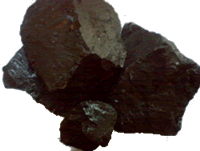
Shilajit

TRADE NAME
SYNONYMS
ABOUT
Shilajit is a Sanskrit word meaning Conqueror of mountains and destroyer of weakness. Shilajit is used in the Ayurveda as a Rasayana and is an Adaptogen. Shilajit contains at least 85 minerals in Ionic form as well as humic acid and fulvic acid. Clinical researches have been in progress and the ancient claims of the drug’s several properties, including anti-aging properties.
ORIGIN
Ancient Indian yogis, and practitioners of Ayurvedic medicine, on understanding several potent qualities of Shilajit, had attributed divine powers to Shilajit. In essence Shilajit is a natural concentrate of plants of the regions of the Himalayas, and is found in the Himalayan ranges in India, Nepal, Pakistan, China, and Tibet. The flora of the Himalayas is rich and varied, and for thousand of years the plants have come to life, absorbed nutrients from the soil, and then died out. This is a process which has been repeated again and again countless times, and continued for millennia. It is believed that Shilajit found in the Himalayas are the fossilized form of those plants, and the particular biosphere of the Himalayas created them and bestowed medicinal qualities to them. Shilajit, found in the higher altitudes of the Himalayas, are collected during summer months when the ice melts, and Shilajeet lumps are sometimes spotted and collected from the crannies of rocks, and similar places. Shilajit so collected are processed by several drug manufactures and presented in capsule form for human consumption.
SHODHAN OR AYURVEDA PURIFICATION PROCESS
NOTE
Puri (2006) in his book has devoted one chapter to Shilajit. He has given in detail about the study of Shilajit in the last two centuries and the various speculated sources of Shilajit. The Indian workers considered dendroid Euphorbia' as the source but in Ladakh faeces of mountain mouse were considered the source. In Russian literature, it is said to have formed by compaction of Junipers. Scientific studies reveal that it is a humus like compound. Dr Peter Zahler (1998 and 2002) has commented on the relationship of the occurrence of Shilajit (spelled here as Salajit)and the Woolly Flying Squirrel and Dr Carman (unpublished) has reported his observations of mammal pellets (Woolly Flying Squirrel and Afghani Pika) in association with Shilajit deposits in northern Pakistan. These pellets are the so called pallets in photomicrographs described by Faruqi (1997).
In the modern time, Sir Martin Edward Stanley, a British explorer during his expeditions to the Himalayas, in 1870, observed that monkeys on the gangetic plains became old by the time they were 10 years old, whereas the monkeys on the higher altitudes continued to be highly active and agile even during old age. He noticed that the monkeys at the higher altitudes were eating a rock like melted material oozing out from rock crevices when the ice cover melted during the summer months. The local people called the substance Shilajit, and its healing properties were well-known to them for long.



 Your current navigation map.
Your current navigation map.